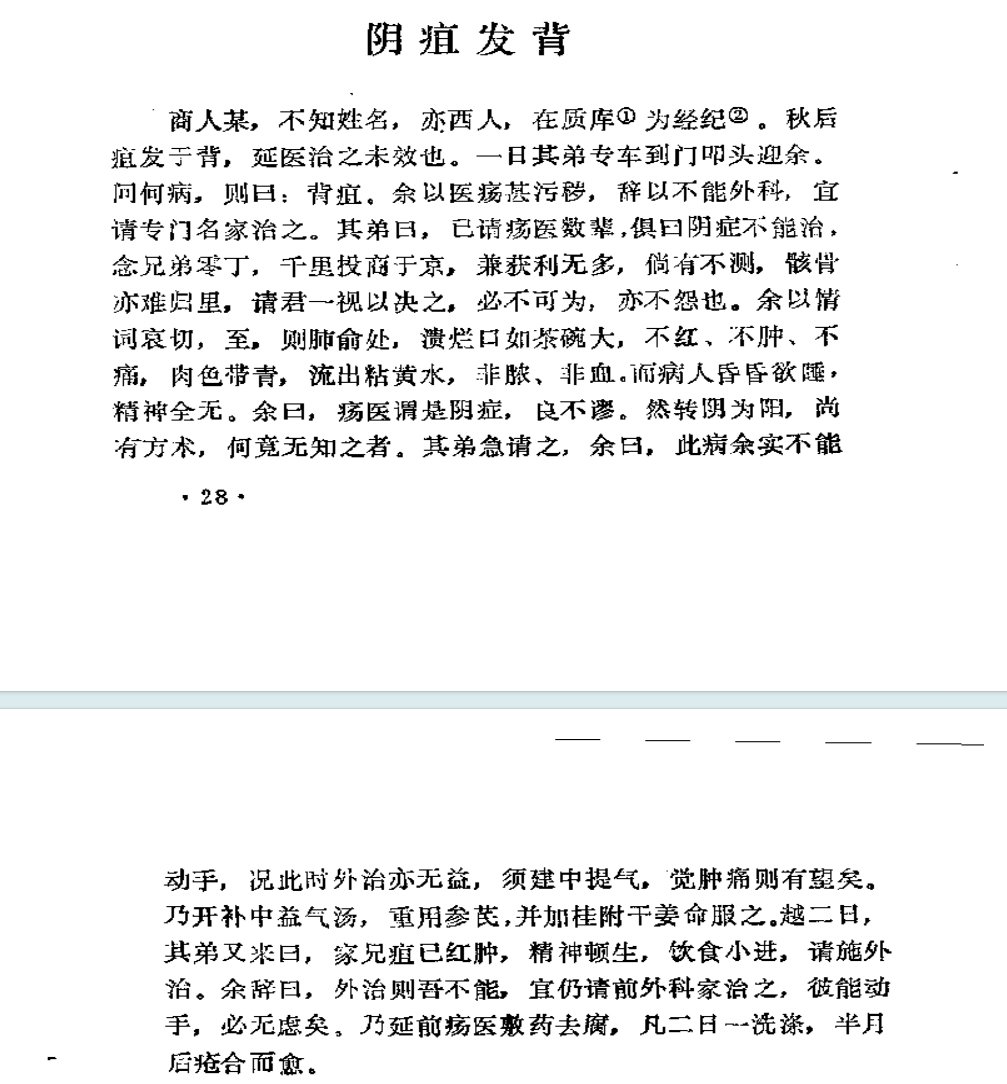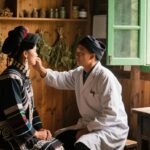A merchant from another province (name unknown), working as a pawnshop manager, developed a severe abscess on his back after autumn. Despite multiple medical interventions, the condition persisted. His younger brother arrived at my residence in a carriage, performing a kowtow (a traditional gesture of respect involving kneeling and touching the forehead to the ground) to plead for assistance. Upon learning it was a back infection, I declined:
“Treating festering wounds requires surgical expertise. You should consult a specialist.”
The brother urgently countered:
“Several surgeons have already diagnosed this as a yin syndrome (in TCM, a life-threatening condition caused by internal cold stagnation and metabolic collapse). We’re stranded in the capital with limited resources—if the worst occurs, we couldn’t even repatriate his remains. Please assess his condition. Even if untreatable, we’ll bear no resentment.”
Moved by his sincerity, I examined the patient. Key observations included:
Abscess location: Bowl-sized area at the Feishu acupoint (two finger-widths beside the third thoracic vertebra, linked to respiratory health in TCM).
Tissue appearance: Grayish periphery without redness or swelling, oozing yellowish viscous fluid (distinct from normal pus/blood).
Systemic symptoms: Lethargy and critically diminished vitality.
I explained:
“The yin syndrome diagnosis aligns with TCM principles. However, our approach focuses on transforming yin to yang (rebalancing metabolic activity). There is still hope.”
When pressed for (used in traditional contexts), I clarified:
“Wound debridement requires surgical skill. Topical medications are currently ineffective. We must first restore systemic function using potent qi-boosting formulas to stimulate metabolism. Only with visible inflammation—termed yang recovery in TCM (analogous to immune response in Western medicine)—can surgical intervention succeed.”
Prescription:
Intensified Bu Zhong Yi Qi Tang (Tonify the Middle and Boost Qi Decoction)
Base formula: Double dosage of astragalus root, ginseng, etc.
Added warming agents: Cinnamon bark, aconite root, dried ginger.
Follow-up:
Day 2: The brother reported, “The wound is red and swollen! He’s conscious and eating. Please treat the injury now!”
Intervention advised: “Reconsult surgeons—active inflammation indicates debridement is now viable.”
Outcome: Surgical cleaning every 48 hours led to full recovery within two weeks.



Leave a Reply